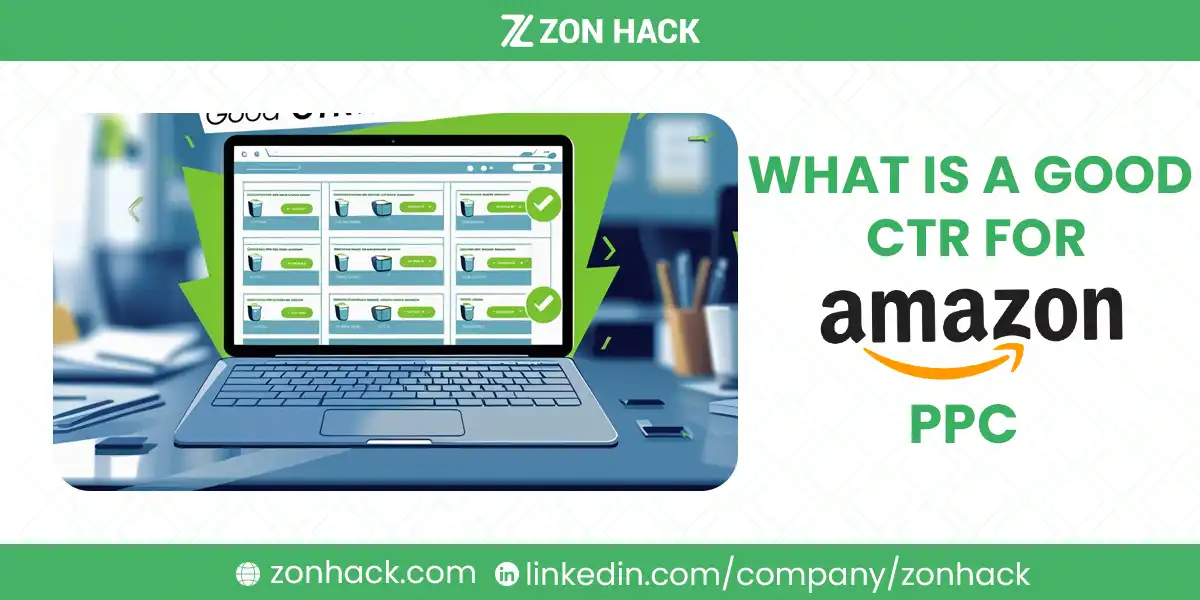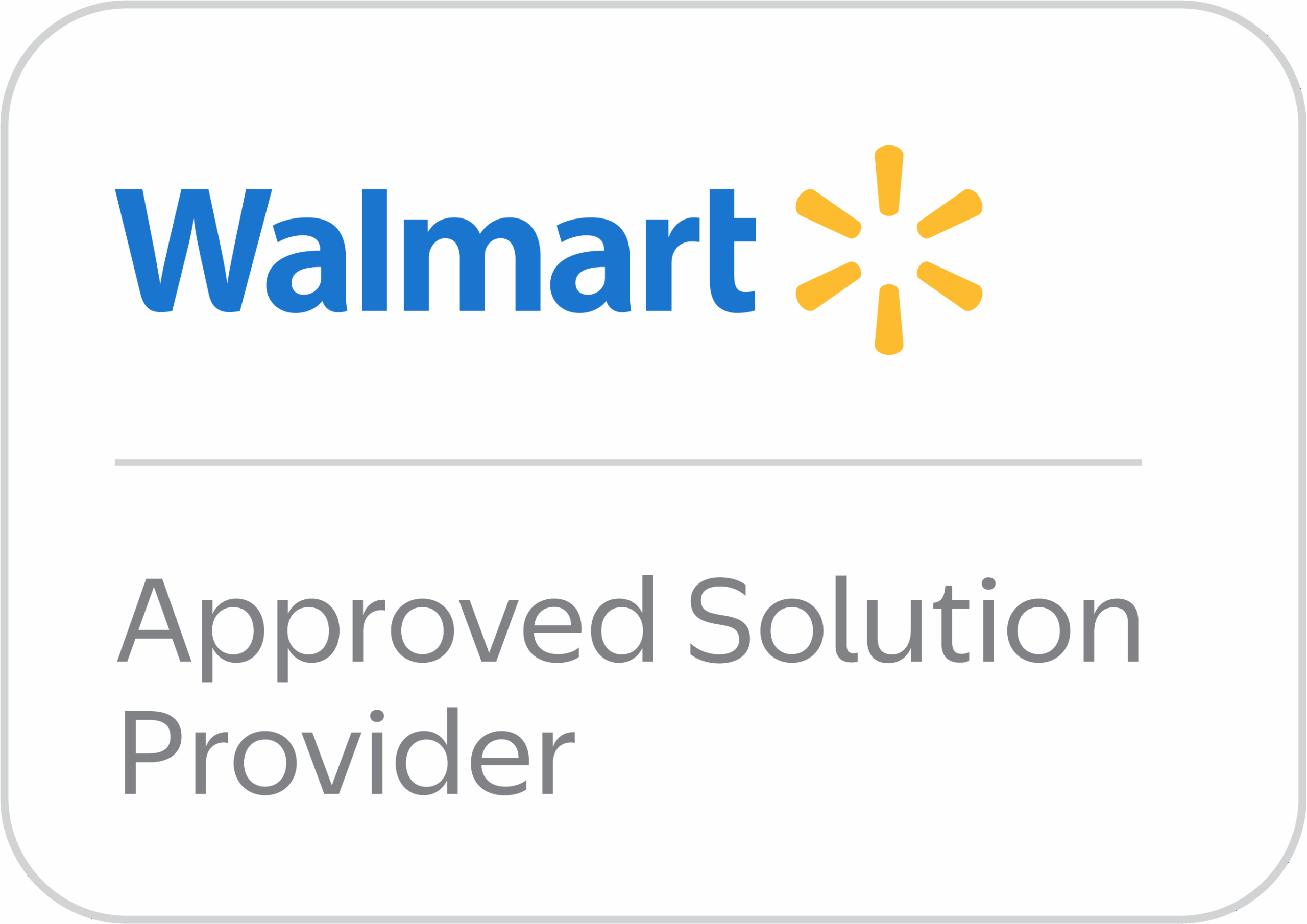Benchmarks, Why It Matters, and How to Improve It
If you’re running Amazon PPC campaigns, CTR—Click-Through Rate—is one of the first numbers you need to understand. It’s not just a metric—it’s a window into how well your ads are connecting with real shoppers.
CTR stands for click-through rate, and it shows the percentage of people who clicked on your ad after seeing it.
The Formula Is Simple:
CTR = (Clicks ÷ Impressions) × 100
So, if your ad was shown 10,000 times (impressions) and got 50 clicks, your CTR is 0.5%.
This data is easy to find. Inside Amazon’s Advertising Console, just head to your Campaign Manager or the Performance Over Time report in Seller Central. But reading the number is one thing. Knowing what it means—and what to do about it—is where real results come from.
Why CTR Is One of the Most Important PPC Metrics
CTR is more than just a reflection of whether your ad is getting attention. It influences nearly every part of your campaign performance.
When your CTR is strong:
- Your ads are resonating. They’re relevant to the search term, and they’re compelling enough to make someone stop and click.
- Amazon takes notice. Higher CTRs feed into Amazon’s internal quality score system. The better your CTR, the more Amazon rewards you with stronger placements at better CPC rates.
- Your ACoS goes down. If more people are clicking and converting, your ad spend becomes more efficient.
- Your organic rankings can rise. Amazon tracks how ads perform and may boost products in search when ads drive engagement.
But when CTR is weak, it’s a sign something’s off—maybe your targeting is too broad, maybe your images aren’t pulling people in, or your pricing doesn’t compete.
In short, CTR acts as a diagnostic tool. If it starts to drop, it’s time to investigate your keywords, creative assets, and product listing quality.
What Is a “Good” CTR on Amazon?
Now that we understand why CTR matters, the obvious next question is: What’s a good CTR? The answer depends on your ad type, category, and placement.
General CTR Benchmarks on Amazon PPC
Across Amazon, the average CTR is somewhere between 0.34% and 0.4%, depending on the dataset and year. But that’s just the middle of the road.
| Performance Level | CTR Range |
| Poor | < 0.3% |
| Average | 0.4% – 0.75% |
| Good | 0.75% – 1.5% |
| Excellent | > 1.5% |
If your CTR is hovering around 0.5% or higher, you’re generally in a healthy spot. Top-performing ads often hit above 1%, especially in high-intent categories.
CTR by Ad Type: Some Ads Outperform Others
The kind of ad you run affects your CTR—not all Amazon ad formats are equal in how they drive engagement.
| Ad Type | Avg. CTR | Good CTR Threshold |
| Sponsored Products | 0.3% – 0.5% | > 0.40% |
| Sponsored Brands | 0.35% – 0.75% | > 0.60% |
| Sponsored Display | 0.3% – 0.5% | > 0.40% |
Sponsored Products usually perform best because they show directly in search results based on buyer intent. Sponsored Brands can do well too—especially if you use a strong custom headline and a clickable logo. Display ads tend to underperform unless they’re retargeting previous visitors with strong visuals.
CTR by Placement: Where Your Ad Appears Changes Everything
If you’re aiming for top performance, placement is key.
Top of Search (first few listings on the first page) has the highest CTR—sometimes 2% to 5% depending on the category. Amazon itself has stated that the first 3 results get around 64% of all clicks.
By contrast, Rest of Search and Product Pages tend to see lower CTRs, often below 0.3%, because they’re less visible or less relevant.
This is why campaign settings that increase bid multipliers for Top of Search can have a direct impact on your CTR.
CTR by Category: Industry Matters
CTR isn’t just about ad structure—it also varies based on what you sell. Some product categories naturally perform better than others.
| Product Category | Typical CTR Range |
| Electronics / Home Goods | ~0.45% |
| Beauty / Supplements | 1% or more |
| Office / Generic Products | 0.2% – 0.3% |
In highly commoditized markets—like office supplies or cables—it’s harder to stand out. Everyone looks similar. In contrast, lifestyle products with emotional or aesthetic appeal, like skincare or fitness, often enjoy higher engagement.
PPC vs Organic CTR: What’s the Difference?
PPC and organic listings don’t perform the same when it comes to CTR. This is mainly due to trust signals—many shoppers still avoid “Sponsored” listings when possible.
| Type | Bad CTR | Avg. CTR | Good CTR | Excellent CTR |
| PPC | < 0.3% | 0.4% – 0.75% | 0.75% – 1.5% | > 1.5% |
| Organic | < 1.5% | 1.5% – 2.5% | 2.5% – 4% | > 4% |
This is why CTR alone isn’t enough. Look at CTR alongside conversion rate and ACoS to get the full picture. Some ads may have low CTR but still drive profitable sales.
What Influences CTR the Most?
So, what actually affects whether someone clicks on your ad? A lot. Let’s break it down.
1. Relevance to the Search Term
If your ad shows up for a search that doesn’t match your product, CTR tanks fast.
For example, imagine someone searching for “leather purse” and your ad shows a “men’s wallet.” Even if it gets impressions, it won’t get clicks.
Amazon wants high relevancy—use tightly grouped keyword campaigns and review your Search Term Reports weekly to avoid mismatches.
2. Product Listing Quality
Your ad gets them to stop. Your listing gets them to click.
- Main Image: It should pop on the search page. Use high-resolution, clear product images with white backgrounds.
- Title: Include primary keywords and benefits. Make it readable—don’t just stuff it.
- Bullets: Highlight value fast. What makes your product different?
- Packaging: Even in the main image, a premium-looking box can influence clicks.
3. Reviews and Ratings
Social proof drives engagement. Listings with 4.2+ stars and over 100 reviews will outperform similar products with low reviews, even if the price is higher.
4. Price and Promotions
A slightly lower price than competitors often drives more clicks.
But it’s not just about being cheap—perceived value matters. If you offer a coupon or lightning deal, CTR can increase significantly, even if the price is similar.
5. Ad Placement and Bid Strategy
We covered earlier how Top of Search dominates CTR. To get there, your bid has to be strong, and your listing quality high.
Campaigns that bid too low often end up buried, generating a lot of impressions and almost no clicks—a recipe for bad CTR.
Actionable Strategies to Improve Amazon PPC CTR
. Enhance Ad Placement Through Smart Bidding
Click-through rate isn’t just about your listing—it’s also about where your ad shows up.
Top-of-search placements command significantly higher CTRs. That’s because shoppers see them first, often before they scroll down or filter. Amazon knows this too, which is why they let you bid more aggressively for top placements.
Inside Campaign Settings, you’ll find placement multipliers. If your CTR is low and you’re buried in the “rest of search,” try this:
- Increase your top-of-search bid adjustment by 30% to 100% to test visibility improvements.
- Monitor your CTR daily for a week. If impressions stay stable but CTR rises, your higher placement is working.
- If CTR doesn’t budge, your listing might need creative improvements before increasing spend.
Leverage Amazon Badges (and Earn Them Honestly)
Badges like “Amazon’s Choice” or “Best Seller” act like magnets for clicks.
Shoppers trust them instinctively. A badge immediately signals that the product is popular, reliable, and well-rated. And it reflects well on your brand.
But you can’t just buy your way into these badges. Amazon awards them based on:
- High conversion rates
- Positive reviews
- Low return rates
- Consistent sales velocity
- Fast Prime delivery
If you’re selling through FBA and maintaining a conversion rate above your category average, your chances increase. So does your CTR.
ZonHack Tip: Don’t chase badges through black-hat tactics. Instead, use review follow-ups, keyword targeting, and optimized listings to organically earn these trust signals. We’ve helped dozens of our clients secure “Amazon’s Choice” within 45 days of PPC + listing strategy updates.
Split-Test Your Ad Creatives
Amazon has rolled out more creative tools for brands recently—especially for Sponsored Brands and Sponsored Display campaigns.
These allow you to:
- Change your headline text
- Swap out main images
- Highlight brand store pages or custom landing pages
If your CTR is below 0.4%, it’s time to split test variations.
One ZonHack client selling fitness accessories ran two Sponsored Brand creatives—one with a lifestyle image of someone using the product, the other with a flat product shot.
Result: The lifestyle version earned a CTR of 1.21%, while the static version hovered at 0.48%. That’s a 152% lift in engagement just from changing one image.
Small changes can drive major CTR improvements.
Use Enhanced Brand Content to Build Confidence
Click-through rates rise when shoppers trust what they see.
Enhanced Brand Content (EBC), now called A+ Content, provides that trust layer. While A+ doesn’t show directly on the ad, it increases post-click engagement and improves retargeting performance—leading to higher CTR over time.
Video, comparison charts, lifestyle imagery—these build a richer visual story.
If you’re running Sponsored Brands Video ads, the quality of that video dramatically affects CTR. Use motion, product demonstrations, and subtitles to get attention fast.
Pro tip: Keep videos under 45 seconds and hook the viewer within the first 3 seconds.
Badges, Labels & Fulfillment Method
Don’t underestimate the clickworthiness of Prime-eligible and Fulfilled by Amazon (FBA) products.
When a shopper sees that Prime badge, it reduces mental friction. They know the product ships fast, with fewer risks.
One ZonHack analysis showed that identical listings—one FBA, one FBM—had vastly different CTRs. The FBA listing averaged 0.76% CTR, while the FBM version struggled at 0.32%, despite the same images and titles.
Fast shipping equals more clicks.
Monitor the Competitive Landscape
In saturated categories, CTR drops are often not about your ads—they’re about everyone else’s.
If competitors are running video ads, slashing prices, or have 5,000+ reviews, it becomes harder to stand out.
That’s when branding, imagery, and creative testing become critical. You can’t always win on price, but you can win attention.
Use Amazon’s “Auction Insights” and Category Benchmarking reports to see if your CTR is lagging due to competitive noise.
Bottom Line: What Should You Really Aim For?
There’s no universal magic number—but here’s the honest benchmark:
Aim for a PPC CTR above 0.5%. If you’re consistently above 1%, you’re outperforming the majority of Amazon advertisers.
But remember—CTR isn’t a trophy. It’s a diagnostic signal.
If your CTR is low:
- Are you targeting the wrong keywords?
- Is your image underperforming?
- Are your competitors outclassing you visually?
If your CTR is high but conversions are low, your product page may be the issue. Maybe the price is too high. Maybe reviews are lacking.
A great CTR with poor sales is like a high open rate with no email clicks—it means people are interested, but something is breaking trust once they click.
So look at CTR in context. By ad type. By category. By placement.
Here’s a summary reference:
| Ad Type | Avg. CTR | Good CTR |
| Sponsored Products | 0.3%–0.5% | > 0.40% |
| Sponsored Brands | 0.35%–0.75% | > 0.60% |
| Sponsored Display | 0.3%–0.5% | > 0.40% |
| Placement | Typical CTR Range |
| Top of Search | 2% – 5% |
| Rest of Search | 0.3% – 0.5% |
| Product Pages | 0.2% – 0.4% |
Frequently Asked Questions
What’s the average CTR on Amazon PPC?
Most campaigns average between 0.34% and 0.4% across all ad types. Sponsored Products usually outperform others.
Is 1% CTR considered good?
Yes. 1% or higher is considered excellent and often indicates highly optimized targeting and creatives.
Why is my CTR dropping suddenly?
Check for:
- Changes in competition (new aggressive bidders)
- Image quality decline
- Shifts in keyword targeting
- Seasonal factors or price changes
Does high CTR mean higher sales?
Not always. High CTR gets more people to your page—but conversion depends on your listing quality, price, and reviews.
CTR Isn’t Just About Ads. It’s About the Whole Funnel.
A shopper clicks because something speaks to them—the image, the title, the price, or the promise.
They buy because what they see after the click reinforces that trust.
At ZonHack, we specialize in both sides of that equation. From smart keyword targeting to compelling visuals and bulletproof listing optimization, we help sellers improve CTR and turn that attention into real, scalable sales.




